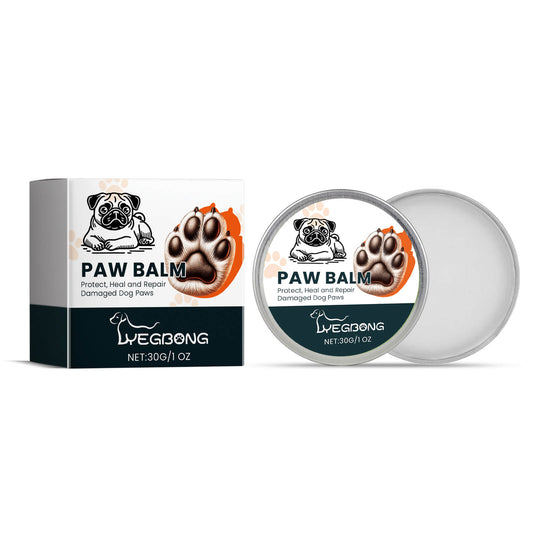How to teach your dog to enjoy nail trims
Nail care doesn’t have to be a wrestling match. With a little planning and lots of positive reinforcement, most dogs can learn to like (or at least calmly tolerate) trims. The key is to go at your dog’s pace, split the process into tiny steps, and end every session while your dog is still having fun.
Start with Emotion, Not Nails
Before touching paws, build a Conditioned Emotional Response (CER) to the tool you’ll use (clipper, grinder, or file). Park the tool near a stash of high-value treats. Several times a day: show the tool → treat → praise → put it away. Repeat until your dog perks up at the sight of the tool. For grinders, add a sound game: turn on for a second across the room → treat → off. Gradually extend the “on” time to a few seconds, always pairing with food and calm praise.
Paw Handling Comes Next
Many dogs are paw-sensitive, so decouple paw handling from trimming. Start where your dog is comfortable (shoulder, then leg, then paw). Teach an offered “shake” so your dog chooses to place a paw in your hand. Build duration with a counting game—1-2-3-treat—slowly extending to about 10–15 seconds while you lightly touch toes. If your dog hesitates, shorten the step and reinforce more frequently.
Micro-Sessions Beat Marathons
Combine the pieces only when your dog is happy with tools and paw handling: hold paw → bring tool in → touch nail → treat. On day one, that single touch might be the entire session. Over time, progress to a brief scrape with the grinder or a single, easy clip—one nail is a win. Stop while everything still feels easy, then celebrate. For many dogs, steady progress takes weeks or even months; that’s normal.
Pro Tips from Trainers
-
If using a grinder, start slow. Many dogs do well around 7–12k RPM with 120–240 grit sanding bands (finer grit for small/soft nails, coarser for large/hard nails). If the band skips, slow the speed or use finer grit.
-
Pair trims with a lick mat or stuffed Kong so your dog has a built-in reward and focus. (The Reddit thread also mentions the “Bucket Game” as a great consent-based position practice.)
-
For dogs who truly panic about handling, a scratch board (sandpaper on a board) can maintain front nails while you keep training.
Safety First
Watch for stress: lip licks, turning away, stiffening, growling. If you see these, pause and revert to an easier step. For dogs showing aggressive signals, get help from a qualified positive-reinforcement trainer and consider muzzle training for safety. In rare health-critical cases (severely overgrown nails affecting gait), a one-time trim at the vet—sometimes under sedation—may be in the dog’s best interest while you continue desensitization.
Make Tools Work for You
Choose equipment that lets you go slow and precise. Many families like a versatile kit that covers clipping, tidying, and gentle finishing so you can tailor the experience nail-by-nail and keep sessions short.
Try this all-in-one option:
👉 Dog Nail Clipper & Paw Trimmer 4-in-1 — a practical, home-friendly kit designed for controlled, stress-reduced care: https://artisanuni.net/products/dog-nail-clipper-paw-trimmer-4-in-1
With patience, micro-steps, and the right setup, nail trims can shift from dreaded chore to calm routine—building trust every time you pick up the tools.
dog nail grinder/best dog nail clippers/dog nail file/nail trimmer for dogs/dog nail cutter/dog claw clippers/best dog toe nail clippers/dog paw hair clippers/professional dog nail clippers/electric dog nail trimmer/dog nail cutter/best dog nail trimmers/dog claw clippers



